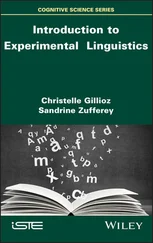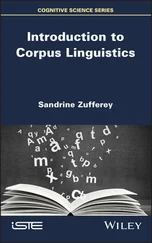we have felt justified in restricting ourselves to providing the basic descriptive apparatus which will enable readers to recognise different morphological processes, while leaving the major theoretical stone unturned.
Whatever the long-term fate of the Chomskian view of linguistic theory, the
coherence which this view has established for the related studies of language acquisition, linguistic processing and language disorders is an impressive achievement. As for language acquisition, we have seen in the relevant sections of the book (6, 13 and 24) that proper consideration of children’s achievements leads, almost inexorably, to the conclusion that they approach first language acquisition with remarkably sophisticated knowledge of phonological, morphological, syntactic and semantic representations. All of this points strongly to the correctness of the view that an innate system of UG provides the child with tightly constrained (and, therefore, useful) information about the form of a grammar for a possible human language.
Turning to the use of language, particularly sentence comprehension, experi-
mental demonstrations of the need to refer to such theoretical grammatical constructs as empty categories (see section 25) are now plentiful. Overall, there is considerable justification for the view that an individual’s mentally represented grammar is normally involved in language use. Note that this does not amount to the claim that the grammar provides a complete theory of language use –
garden-path sentences argue against this – nor that the grammar is the only route to comprehension (for instance, suitable lists of words, such as car, tree, bang, blood, ambulance, hospital exhibiting no syntactic structure, can be interpreted as conveying messages). However, if it is plausible to posit a grammar as a model of native-speaker competence, it would be perverse to deny this grammar a role in accounting for normal linguistic performance, and the discussions we have
provided suggest that such perversity is not at play.
As regards our understanding of language disorders, we have argued (sections
15 and 26) that the postulation of a mentally represented grammar, broken down into various components and distinguished from the general conceptual system, allows us to formulate views of some disorders which go much deeper than noting that patients have general difficulties with language comprehension or global production problems. As we have seen, the major problem for agrammatics
appears to be the selection of appropriate inflectional forms within otherwise intact grammars, and the locus of difficulty for SLI patients is a subset of inflections. We firmly believe that without the modular, autonomous view of
language adopted in this book, such insights and their interpretation in terms of selective impairment would remain remote.
Conclusion
409
As we noted in section 17, our discussion of syntactic variation in section 22
was very different in character to those of sound variation in section 3 and lexical variation in section 16. Whereas sound and lexical variation were both approached from a sociolinguistic perspective, whereby values of variables are correlated with specific social factors, our discussion of syntactic variation was restricted to using our adopted theoretical framework to describe the variants, e.g. Modern English v.
Shakespearian English or English v. German. We did not focus on factors determining the choice of these variants, since we did not consider the situation of one individual simultaneously having access to both variants. However, in a world where the majority of people are (at least) bilingual, such a choice is often available, although the factors determining it may sometimes be rather obvious –
an English–German bilingual will normally use English in London when addressing monolingual William and German in Berlin when addressing monolingual
Wilhelm. But, of course, this can be seen as a case of audience design, a concept introduced in section 3 to account for choice between the values of phonological variables, and there is no reason to believe that other social variables, which have arisen in our discussions of language varieties, will not also play a role in the syntactic domain, particularly when we focus attention on bidialectalism.
Reference to social variables and their role in determining the linguistic features that an individual will employ on an occasion brings us quite naturally to questions of language use, and our book closed with a review of some of the issues that arise once the fact that language is often used to communicate in a specific context is seen as worthy of study.
We will end with two final remarks of considerable importance. Firstly, there is no conflict between recognising the important role of language in structuring conversations and the alternative that has directed us through the earlier parts of the book, namely an emphasis on language as an internalised cognitive system that can be studied in abstraction from its role in communication and social interaction. Of course, it may prove to be the case that a full understanding of the use of language is a prerequisite to coming to terms with its structure, but this is not inevitable, and we hope that this book will have persuaded readers that the alternative strategy of abstraction from use is a valuable one from which insights can flow. Only additional research conducted from a variety of perspectives will push us towards the deeper understanding that we all seek. The second final point brings together the issues we introduced in section 27 and the fundamental distinction between competence and performance that we raised in our
Introduction. Section 27 was, of course, concerned with sentence use, but it is important to realise that there is a role for a competence/performance distinction in this domain of use too, that is, it is necessary to distinguish between an individual’s implicit knowledge of, say, the Gricean maxims or the principles of
Relevance Theory, and that individual’s employment of that knowledge on an
occasion. In short, just as one can perform in such a way as not to accurately reflect one’s phonological or syntactic knowledge (speech errors, syntactic illusions), so one can be pragmatically inept on an occasion. The idealisation that is involved in
410
linguistics
the focus on knowledge is a necessary strategy in any scientific enquiry, and we maintain that the successes which have been achieved by adopting this idealisation amply justify it. This is no less true in sociolinguistics or in pragmatics than it is in morphology or syntax, and we believe that the successes of contemporary linguistics, limited as they may be, provide ample illustration of this.
Appendix 1
The International Phonetic Alphabet
(revised to 1993, updated 1996)
411
Appendix 2
Phonological distinctive features
The information that is contained in appendices 2 and 3 is a slightly modified version of material appearing in Andrew Spencer’s Phonology (Oxford: Blackwell, 1996). The authors are grateful to Blackwell for their permission to use this material.
List of distinctive features
This list includes definitions of the binary features used in this book as
well as a number of others in common use which you will come across in wider reading.
consonantal [±cons]
The [+cons] sounds are the obstruents, nasals and liquids,
in which there is a relatively tight constriction in the vocal tract,
compared with the [−cons] sounds, the glides and vowels.
approximant [±approx]
In [+approx] sounds the constriction is not very great;
the class includes liquids as well as glides and vowels. Fricatives
and stops (including nasal stops) are [−approx].
Читать дальше
![Andrew Radford Linguistics An Introduction [Second Edition] обложка книги](/books/397851/andrew-radford-linguistics-an-introduction-second-cover.webp)











